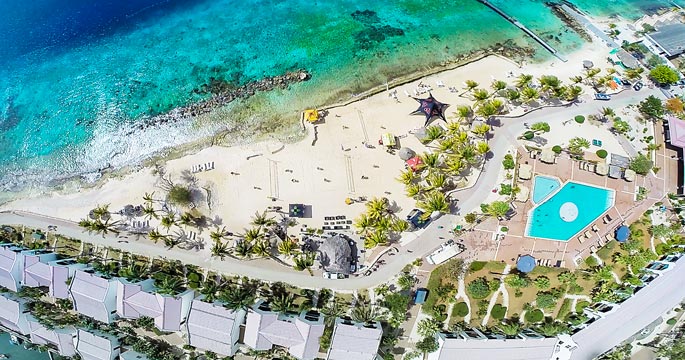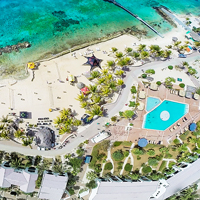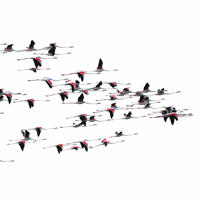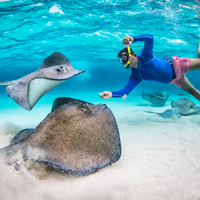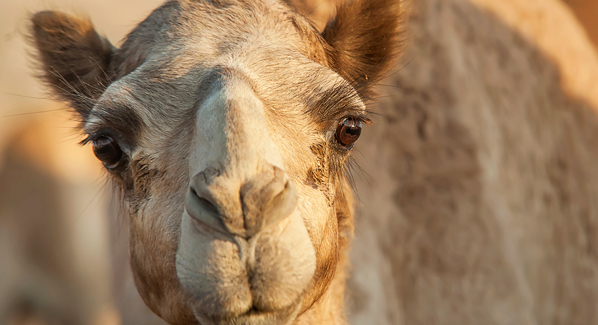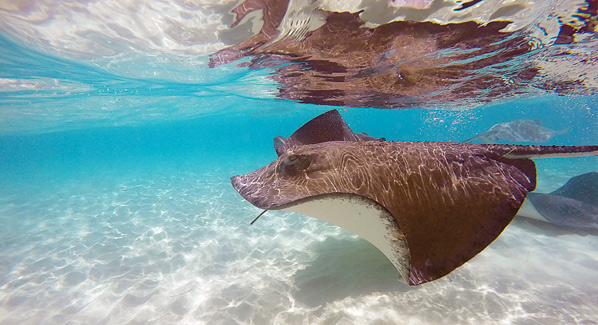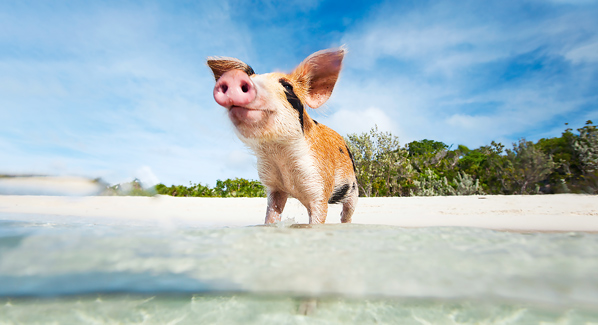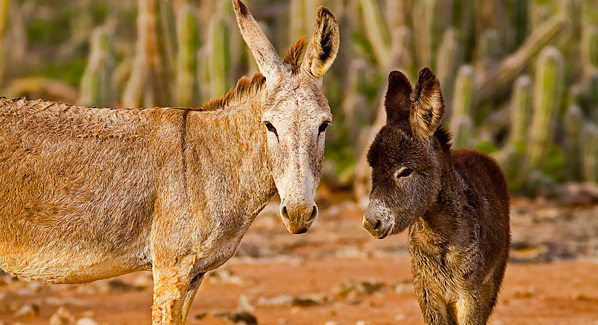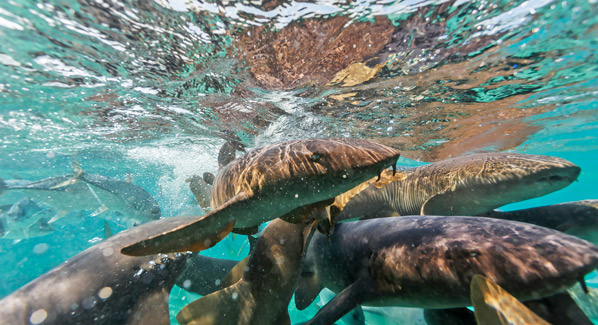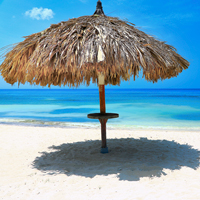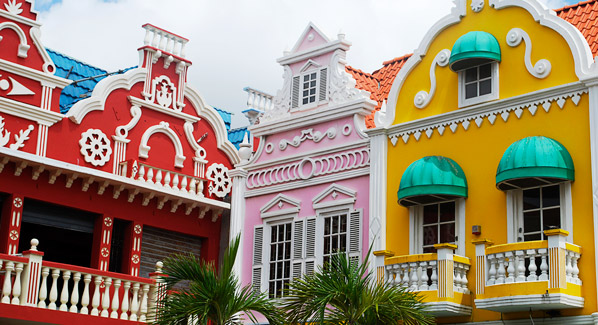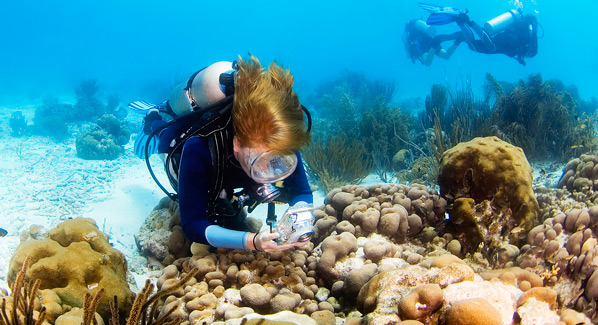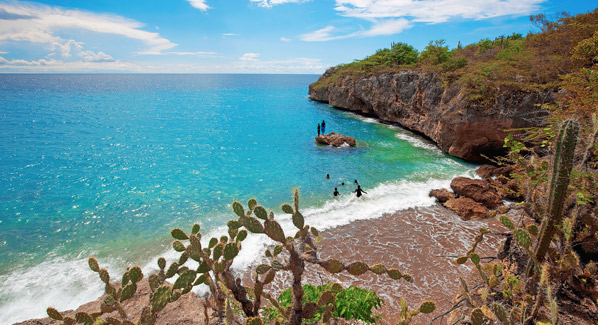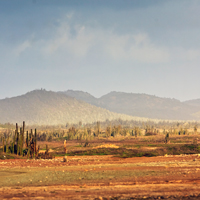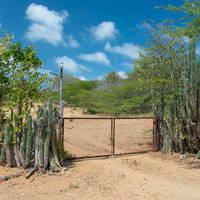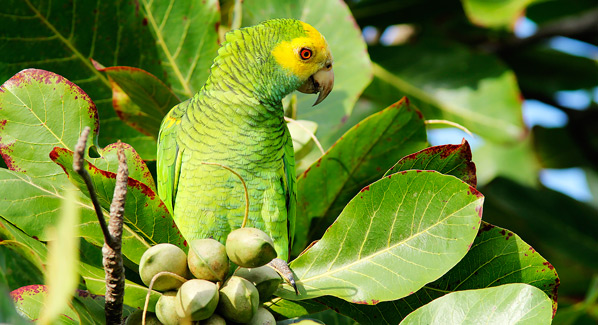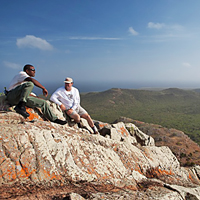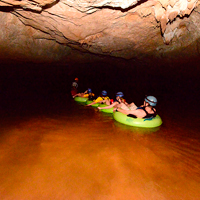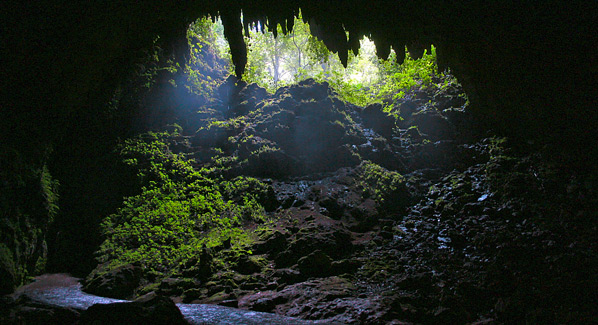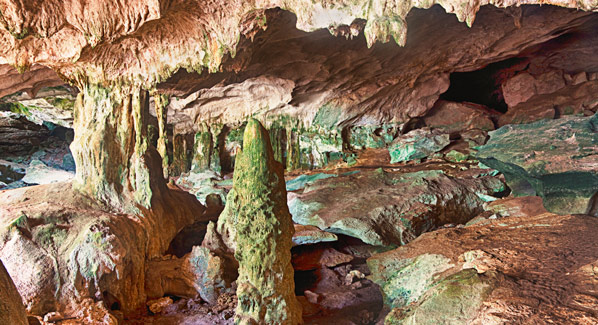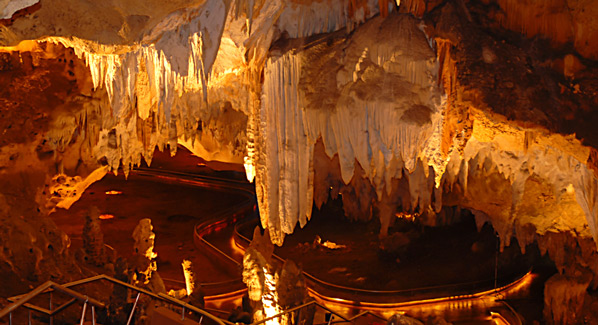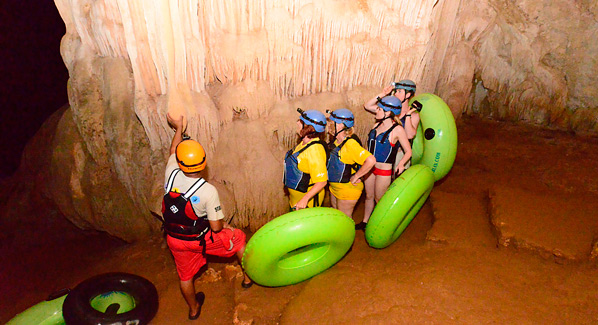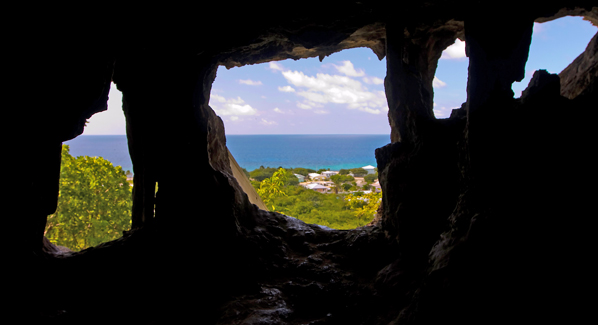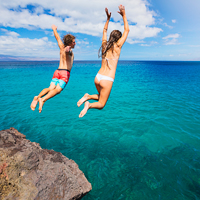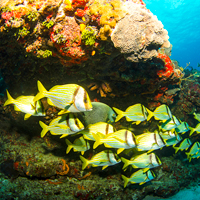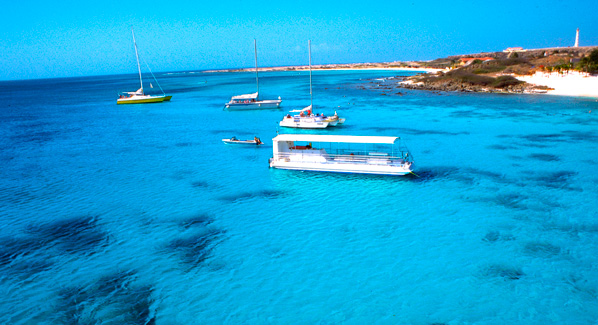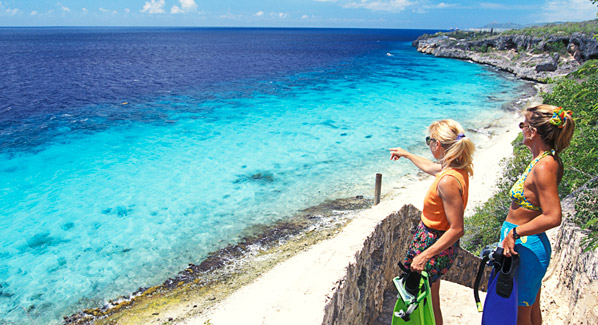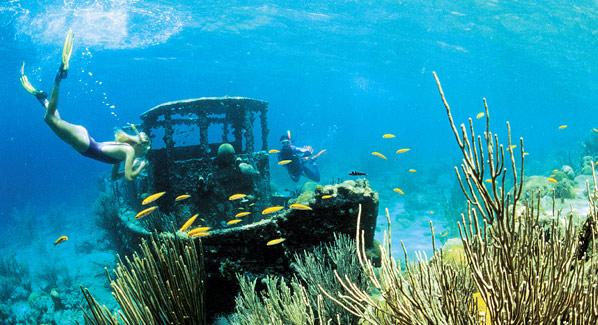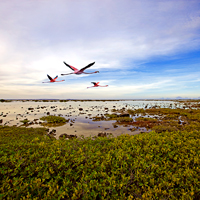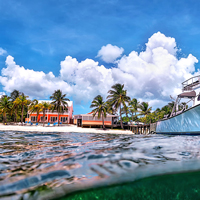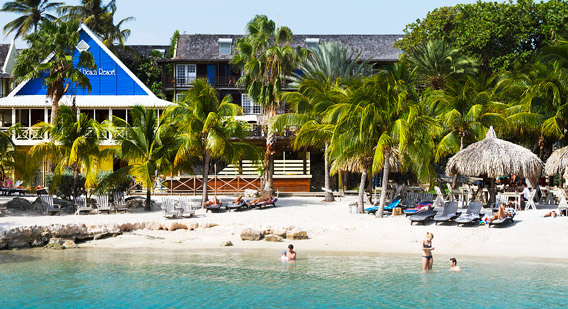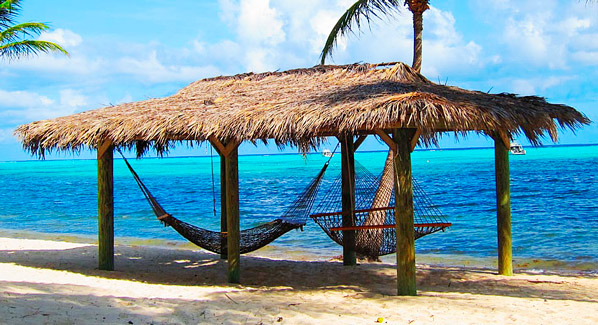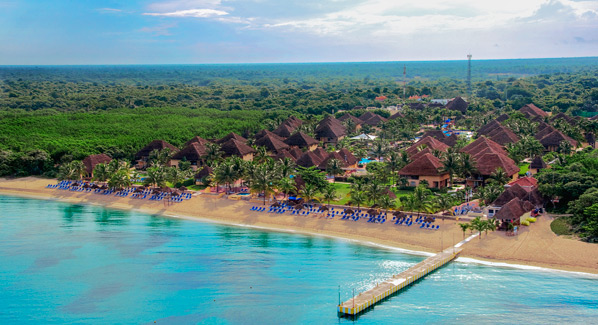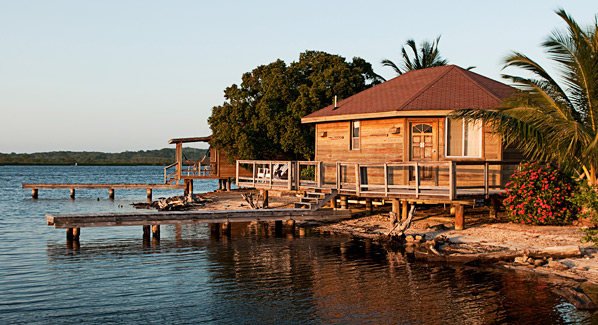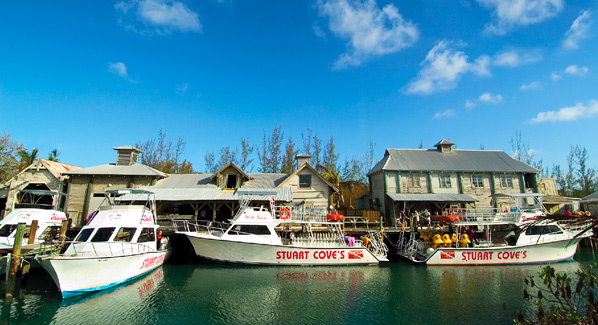Bonaire is known as the diver’s paradise. The island is ringed by colorful coral reefs that begin just yards from shore, and at points all along the sheltered western coast, one can simply wade in from shore. But you don’t have to don scuba tanks to enjoy the view, because this same combination of shallow reefs and calm, clear waters that divers crave also make Bonaire one of the best places in the Caribbean for snorkelers.
A rental car provides access to dozens of snorkel sites scattered along the island’s west coast, but even easier are the waterfront resorts where reefs are just a short stroll from rooms. There are more than a dozen waterfront hotels on Bonaire, but some cater more heavily to divers, and others perch on low limestone bluffs that don’t provide easy water entry. For the ideal combination of amenities, water access and ambiance, these three resorts are our favorites.
Plaza Beach Resort Bonaire
On an island not known for its beaches, the Plaza Resort overlooks a half- mile swath of natural white sand on the island’s calm western shore. The resort’s expansive grounds are also punctuated by the channels of a man- made lagoon, giving most every room a water view. All the amenities one would expect from an upscale all-inclusive property are in place, including spacious suites, beachside dining, complementary water sports and weekly themed parties that include the island’s favorite beach BBQ.
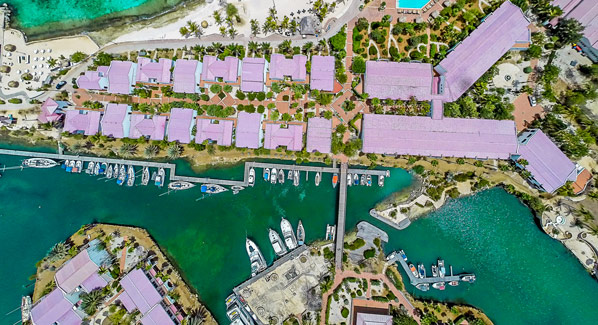
An aerial view of the grounds of Plaza Resort show the white sand beach and the lagoon that meanders through the property, providing waterfront views to rooms and common areas. Photo: Plaza Bonaire
For snorkelers, what truly sets the Plaza apart is the ease of getting to the water. Just yards from the beach, the soft sandy bottom transitions into a fringing reef that attracts hundreds of species of tropical marine life. With no waves or currents to contend with, and a PADI five-star dive center to provide support and instruction, even novices will soon find themselves immersed in the underwater world. Snorkelers can also opt for boat trips to shallow reefs along the coast and on the nearby island of Kline Bonaire. The more adventurous can sign up for snorkel tours of a mangrove lagoon or a guided night snorkeling experience.
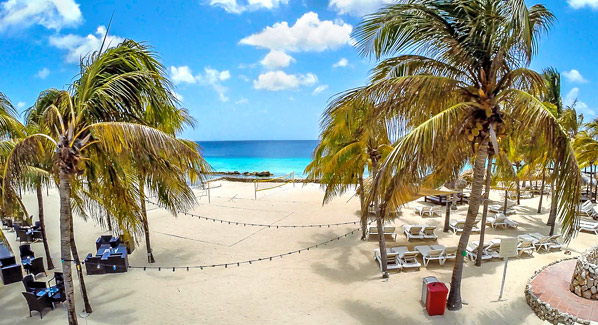
The beach at Plaza Resort is an ideal starting point for snorkeling excursions, and the site of the island’s favorite beach party, which features live music and dancing by torchlight. Photo: Plaza Bonaire
Harbour Village Beach Club
The four-acre grounds of the Harbour Village Beach Club contains all the requisite elements for a Caribbean getaway, including a seaside restaurant with phenomenal sunset views, two pools, an on-site spa and fitness center, member’s lounge, and even meeting spaces and high-speed Internet for those who can’t leave business behind. But it is the waterfront that makes this mid-sized resort a top pick for snorkeling. As the name promises, the property fronts 100 yards of private, palm-fringed beach.
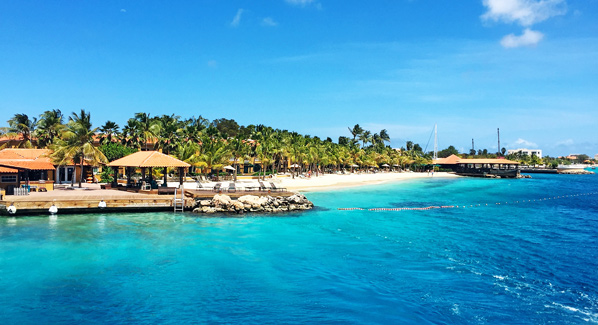
Tucked between a marina and the Caribbean Sea, the landscaped grounds of Harbour Village face a private white-sand beach, where snorkelers wade in to discover a wealth of marine life. Photo: Harbour Village
Premier ocean-view suites are just steps away from the water, and after gearing up in the sand-bottom shallows, snorkelers can make a short swim out to a shipwreck, explore a reef where an underwater webcam streams live images of passing fish and a forest of man-made “coral trees.” Complementary equipment and instruction is available from an on-site dive shop. Guests also have access to water sports such as kayak and paddle board use, while the adjacent marina is a launching point for deep sea fishing trips and sunset cruises. Ashore, the beach offers lounges for sunning, hammocks for napping and a spectacular setting for private torch- lit dinners.
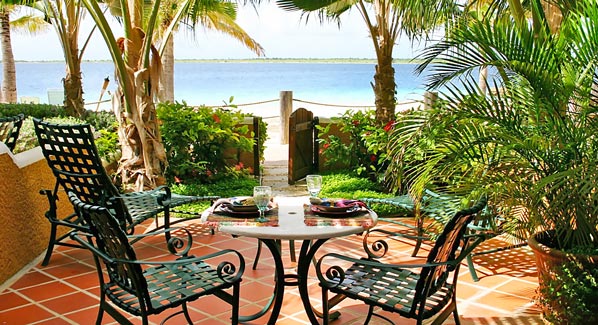
Oceanfront suites at Bonaire’s Harbor Village resort open onto terraces and balconies just a few feet away from a sandy beach. The uninhabited island of Kline Bonaire lies just offshore. Photo: Harbour Village
Buddy Dive
Bonaire is home to a number of resorts that cater primarily to divers, and Buddy Dive is one of the favorites. But you don’t have to be scuba certified to enjoy this waterfront property, as many of the area reefs and on-site amenities that draw the bubble-blowing crowd are also well suited to snorkelers. True, there is no beach to speak of—though the resort has covered a portion of the limestone shoreline with soft sand for sunbathers. Water access isn’t a problem, however, as snorkelers can walk down a short set of steps adjacent to the dive shop, and are immediately greeted by tropical fish, with a shallow coral reef just yards away.
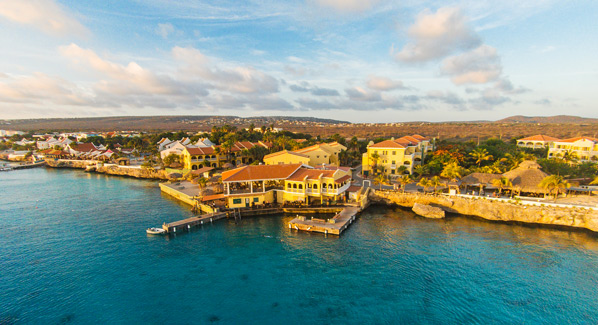
The Buddy Dive resort sits on a shelf of coastal limestone rather than a sandy beach, but water access is easy on docks and broad stairways leading to a shallow coral reef that begins in shallow water. Photo: Buddy Dive
What sets Buddy Dive apart from other dive-centric resorts is the range of additional activities that would appeal to families or mixed group of divers and non-divers. The resort can arrange for adventures such as boat snorkeling, island hikes, off-road bike trips and even snorkel tours of an underground lake. Apartment-style accommodations with full kitchens are also well suited for families and groups, and include all the comforts and indulgences one would expect in a vacation property. Buddy Dive would be an especially good choice for snorkelers who are considering a move to scuba, as the highly rated PADI five-star dive center offers training programs that range for youth and introductory classes to advanced diving practices.
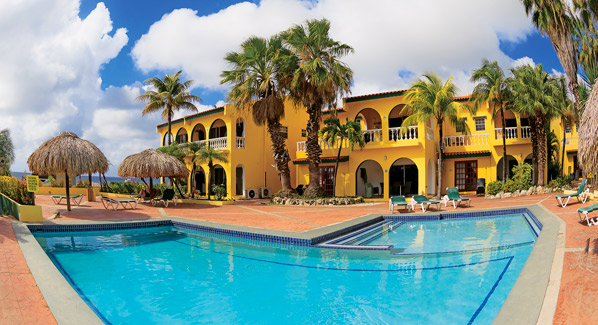
The apartment-style accommodations at Buddy Dive are a favorite with families and groups. The seaside setting includes two pools and a waterfront restaurant with sunset views. Photo: Beth Watson/Buddy Dive

